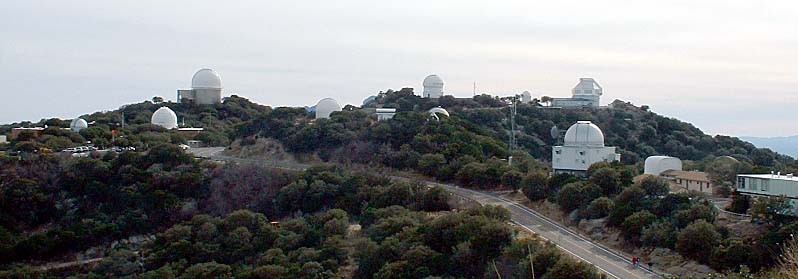Kitt Peak National Observatory
Introduction
Text-to-speech Audio
Images
A view of some of the telescopes on Kitt Peak.

Backstory and Context
Text-to-speech Audio
The need for a national observatory in the United States blossomed around the rise of the Cold War and the launching of Sputnik by the Soviet Union in 1957. At that point in time, astronomers only had access to research materials through certain affiliated institutions, instead of a centralized hub of research. With that in mind, a committee was formed to create a national observatory, and a search soon began for the best possible location to establish such an observatory in the United States. The search continued for some time, but after surveying over 100 mountains as possible candidates, a list of eleven sites in California, Arizona, and New Mexico was left.
Ultimately, Kitt Peak was selected due to a number of factors, including consistently clear weather patterns, a steady atmosphere, a high altitude with low humidity, little light pollution from the nearby city of Tucson, and the exceptional astronomy program of the University of Arizona. Once it had been decided on, the National Science Foundation began negotiations with the Tohono O’odham Nation in order to gain permission to build the Observatory on Kitt Peak, around the Nation’s ancestral homeland. An agreement was reached in mid-1958, on the condition that the land was to be used solely for the purpose of furthering research of astronomy. Since then, construction and additions to the National Observatory has always been ongoing, and the Kitt Peak National Observatory continues to add new equipment to further research capabilities to this day.
